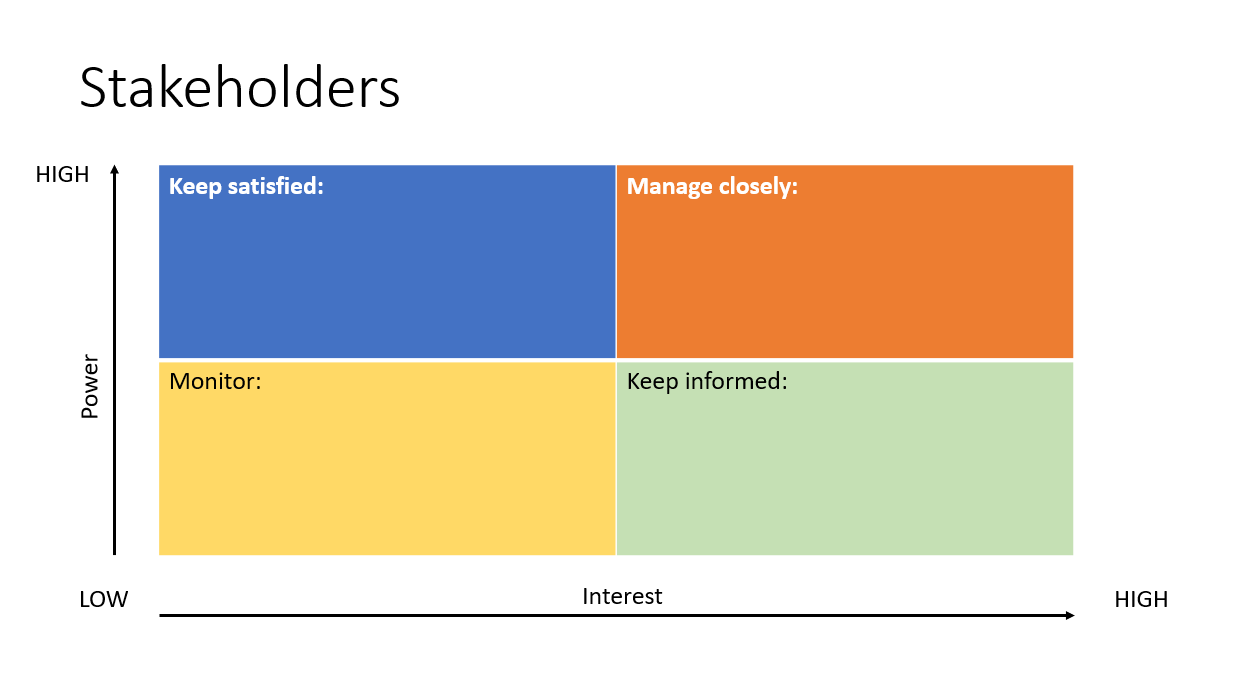Business Bites: What is a stakeholder?
In business, you are not going to be undertaking projects and work in isolation from others. In fact, many people, businesses and organisations may be involved or impacted. These are stakeholders and they are the people or businesses who affect your business and are affected by your business’ activities.
Stakeholders are important to your business because of the influence they have on its success. It is important to make sure you can get support from them and learn from them. Utilising approaches that work for both parties, you need their buy-in and support.
Stakeholders may be external to the organisation or internal.
• Internal stakeholders are directly involved in the business and its activities, e.g., employees, directors, and board members.
• External stakeholders are interested in what the business offers or how you go about business, e.g., customers, suppliers, shareholders, regulatory bodies, and the wider community.
It is important to engage with stakeholders in the right manner and with the right regularity, however, the first step is to identify your stakeholders with a second step to map them in terms of their interest in the project and their power to influence the project.
To begin a stakeholder analysis:
1. Identify potential stakeholders
The first step is identifying your stakeholders – remembering that stakeholders may be internal (e.g. your company’s top leadership, team members and department supervisors, etc) or external, such as a client and their extended team, potential end-users, a supplier, a regulator, etc.
Whilst analysing potential stakeholders, consider the following points:
• Who will have the most influence on the project?
• Who will be most impacted by this project?
• Who holds/controls the resources you need?
• Who will have a financial stake or financial interest?
• Who will be an important, but not a central stakeholder (such as a separate department head)?
Once the above exercise is completed, you will have created a list of stakeholders to evaluate, the first step of which is prioritising them based on their relative importance and influence on your project.
2. Prioritise stakeholders
Some stakeholders will have more say than others in how a project may evolve and resources that are made available to you.
Using a stakeholder matrix (as shown below) helps you to arrange each stakeholder according to their power (influence) and interest. This will help to determine what actions you need to take to keep the relationships on the right footing, including:
• Keep satisfied (high power, low interest)
• Manage closely (high power, high interest)
• Keep informed (low power, high interest)
• Monitor (low power, low interest)

Stakeholder matrix
Stakeholder matrix
Individuals and businesses are recorded in the matrix in the corresponding quadrant. The communication evolving from this process will aid in:
• Engaging key players early in the project to gain support needed
• Aligning stakeholders on project goals and plans
• Acquiring the resources needed for the project
• Uncovering and addressing any conflicts or concerns
• Improving and maximising communication with stakeholders
Effective engagement of stakeholders
As mentioned earlier, it is important to engage with stakeholders in the right manner and with the right regularity. Engage with the right stakeholders, at the right time, with a communication mechanism best suited to them. You may need a flexible approach as each stakeholder may have different preferences.
Your aim is to communicate effectively to help you build relationships, build trust, and increase confidence in your project and the project team.
However, before you engage a stakeholder there are several key points to remember.
1. Have clear objectives and details of the stakeholders you need to engage.
2. Plan the engagement meeting by arranging a mutually suitable time, venue, or media.
3. Take time to identify common ground between your business/project and the stakeholders looking for a mutually beneficial working relationship.
4. Acknowledge their issues and analyse the impact they could have on your plans.
5. Recognise that your stakeholders will need some variation in content, regularity, and style of communications. This may involve you consulting with them, actively listening, negotiating with them, and influencing them and their decisions.
6. Be realistic about what you can achieve and look at compromise if you need to.
7. Document the learnings for future meetings and follow-up. There will be a need for regular review with key stakeholders.
Useful links
MindTools. What is stakeholder management?
Vogwell, D. (2003). Stakeholder management. Paper presented at PMI® Global Congress 2003—EMEA, The Hague, South Holland, The Netherlands. Newtown Square, PA: Project Management Institute.
Wrike. ‘4 strategies for dealing with difficult stakeholders’ by Ian Haynes.
Next time, we will look at four steps to writing a successful business case.